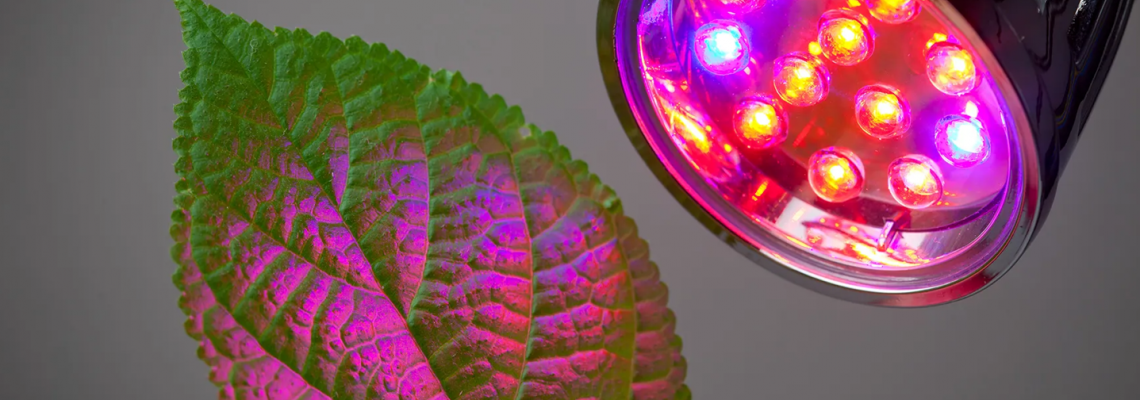
In the world of modern horticulture, lighting has evolved beyond a basic necessity; it has become a powerful tool to enhance plant growth and productivity. While LED technology has already redefined energy efficiency and sustainability in greenhouses and indoor farms, a more refined advancement is now taking center stage: precision optics.
Precision optics refer to specialized lenses and reflectors that are engineered to shape and direct light uniformly across the entire plant canopy. This ensures that every plant—from those in the middle to those along the edges—receives consistent and optimal light levels. Uneven lighting can lead to stunted growth, inconsistent yields, and wasted energy. Precision optics solves this problem by distributing light evenly, promoting uniform plant development, and maximizing growing space.
For commercial growers and CEA professionals, the integration of precision optics is becoming essential. Not only does it lead to healthier crops and higher yields, but it also enhances energy efficiency by reducing light spill and eliminating hotspots or dark zones.
In this blog, we’ll delve into how precision optics function, the benefits of uniform light distribution, and why this innovation is a game-changer for modern agriculture and controlled environment farming. Precision lighting is the future, and it’s already transforming how we grow.
Why Light Distribution Matters
Uneven light distribution is one of the most overlooked challenges in horticultural lighting. In traditional lighting systems or poorly designed LED setups, central plants often receive more light, while those on the periphery remain underlit. This inconsistency leads to:
Irregular growth patterns
Uneven yields
Increased energy waste
Compromised quality and plant health
Consistent lighting across the canopy helps all plants photosynthesize effectively, promoting uniform growth and ensuring that space and energy are used efficiently.
What Are Precision Optics?
Precision optics refer to lenses or reflectors engineered to direct and spread light evenly across a defined area. Unlike basic LED grow lights that emit light in a limited cone or scatter it broadly, precision optics allow growers to:
Focus the light exactly where it’s needed
Avoid hot spots or dark zones
Customize beam angles for specific setups (vertical farming, greenhouses, etc.)
Maintain consistent Photosynthetic Photon Flux Density (PPFD) across the canopy
These optics are integrated into the LED fixture to fine-tune light spread, intensity, and penetration.
How Precision Optics Works
Precision optics manipulate the direction and diffusion of light using advanced lens and reflector designs. Key techniques include:
Beam shaping lenses: Focus light into specific angles (e.g., 60°, 90°, or 120°) depending on the coverage area needed.
Diffusion layers: Scatter light uniformly to reduce harsh shadows or concentrated hot spots.
Multi-angle reflectors: Redirect light from the LEDs to achieve a more even spread without loss of intensity.
By adjusting these optical elements, manufacturers can tailor the light footprint to cover a wide range of cultivation layouts from single-tier to multi-level growing systems.
Benefits of Even Light Distribution
1. Uniform Plant Growth
Every plant gets equal access to light, leading to more consistent height, foliage, and flowering across the entire growing area.
2. Higher Yields
Even lighting means all plants grow at optimal rates, maximizing the total output from a grow room or greenhouse.
3. Improved Light Utilization
Precision optics ensure light reaches plants, not the floor or walls, increasing energy efficiency and reducing waste.
4. Reduced Heat Pockets
Evenly distributed light helps prevent localized overheating and stress in certain areas, supporting plant health.
5. Better Space Optimization
With uniform lighting, growers can confidently utilize corner and edge spaces without worrying about underperformance.
Applications in Modern Agriculture
Precision optics are particularly valuable in:
Greenhouses
Supplemental lighting must be optimized alongside natural sunlight. Precision optics ensure light reaches lower canopy layers and shaded areas.
Vertical Farms
Space is limited, and precision is key. Narrow beam optics prevent light spill and ensure stacked layers receive targeted illumination.
Indoor Grow Rooms
Controlled lighting is the only light source. Uniform distribution is critical to get consistent results across large plant beds.
Research and Lab Environments
Consistent conditions are necessary for accurate plant trials and experiments.
Choosing the Right Lighting System
When selecting LED grow lights with precision optics, consider:
Beam Angle: Wider angles (e.g., 120°) cover broader areas but reduce intensity. Narrow angles (e.g., 60°) provide focused, high-intensity light for taller plants or denser canopies.
Mounting Height: Precision optics should align with your grow space height to optimize distribution.
Reflector Design: High-quality reflectors enhance uniformity and minimize light loss.
PPFD Mapping: Check manufacturers' PPFD distribution charts to confirm consistent light levels across your desired grow area.
Advancements in Optical Technology
Some of the latest LED systems come equipped with:
Adjustable optics that allow growers to change the beam spread based on crop stage or plant height.
Modular lens systems that snap on/off for different growth cycles.
Integrated sensors that detect light imbalance and adjust in real-time to maintain even distribution.
These features make it easier than ever for growers to fine-tune their lighting environment with precision.
Conclusion: Lighting That Works Smarter
The future of horticultural lighting lies in systems that do more than just shine; they think, adapt, and deliver exactly what plants need. Precision optics are a cornerstone of this new era, ensuring every inch of your growing space is productive, every plant gets its fair share of light, and every watt of energy is put to good use.
If you’re looking to improve yields, lower energy costs, and create a more efficient growing environment, upgrading to LED systems with built-in precision optics is a smart investment. Whether you're managing a commercial greenhouse or cultivating in a compact vertical setup, the even light distribution provided by these advanced optics can transform your results.

2 Comment(s)
1
1
1
Leave a Comment